Equipment / Connections
Despite the general compactness, the board can offer a decent number of internal and external I/Os. You make full use of the available space and pack something on almost every spot PCB. There is even a slot for an M.2 SSD on the back.
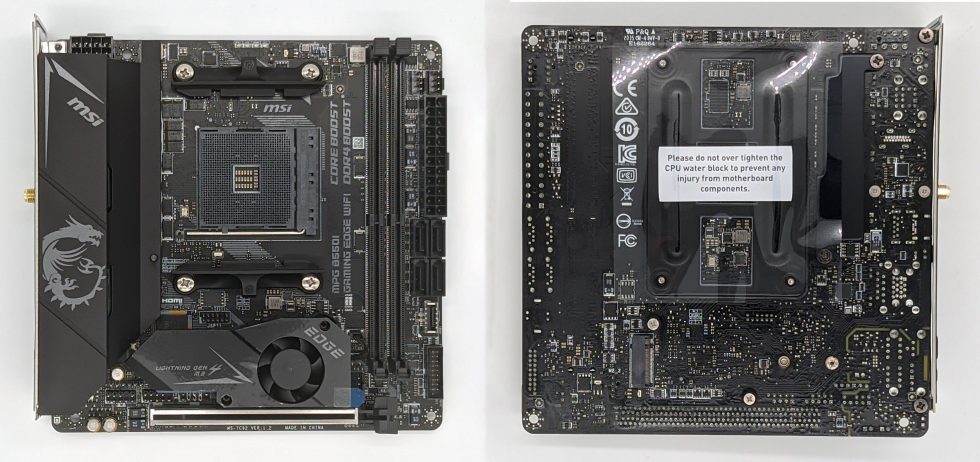
Let’s take a look at the four sides as well, starting with the bottom quarter. A PCIe 4.0 x16 slot for graphics cards and co. must of course not be missing. Since ITX systems often travel or are moved, it makes sense to reinforce the slot. By the way, the small stains can be removed with a little isopropanol.
The right side is equipped from left to right with front USB-A, front USB-C, 4x SATA 3.0, the ATX connector and two 4-pin PWM headers.
On the top side there is only the EPS power supply for the processor due to space restrictions.
With an integrated I/O shield and various connection options, the left side makes a very good impression. Again from left to right we have here:
- BIOS Flash Button, with which the BIOS can be updated even without CPU
- 2x USB 2.0 and PS2 combination port
- HDMI 2.1 when using an APU, a resolution of up to 3840x2160p 120Hz is possible
- RF-240 Connector for WLAN antennas
- USB 3.2 Gen 2 10Gbps (Type-A) + USB 3.2 Gen 2 10Gbps (Type-C)
- 2.5 Gigabit Ethernet LAN + 2x USB 3.2 Gen 2 10Gbps (Type-A)
Although we have an AMD board here, an Intel AX200 card is used for the WiFi 6 (802.11ax) standard. By the way, Bluetooth 5.2 provides this as well, very practical for controllers. The complete datasheet is available at Intel.
Behind the 2.5G LAN port sits a Realtek RTL8125B-CG NIC, which we are now seeing more often on consumer boards. A feature overview is available at Realtek.
By the way, a NUVOTON NCT 6687-R controller chip is used to monitor voltages, temperatures and fan speed. By the way, since the end of last year it seems to be natively supported by the Linux kernel, according to this source.















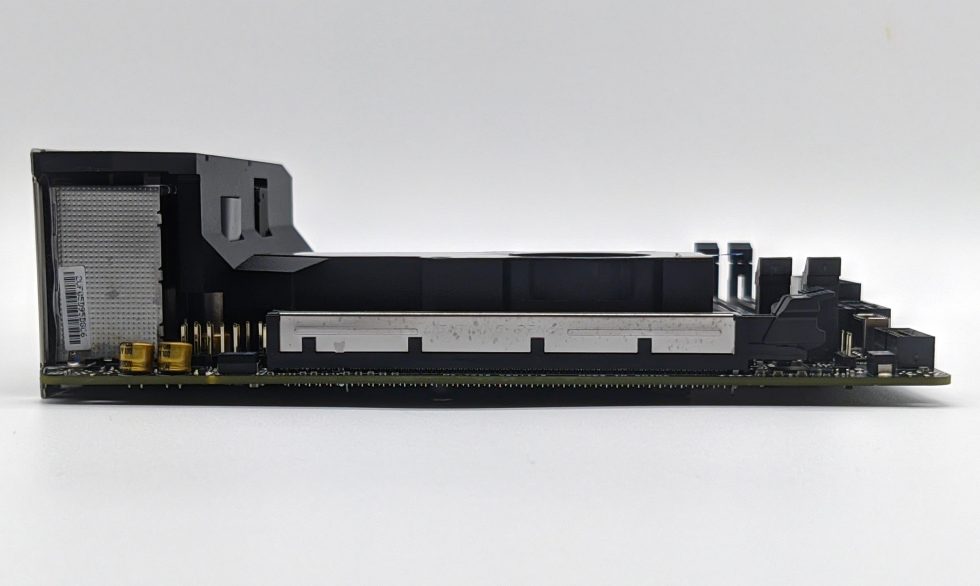
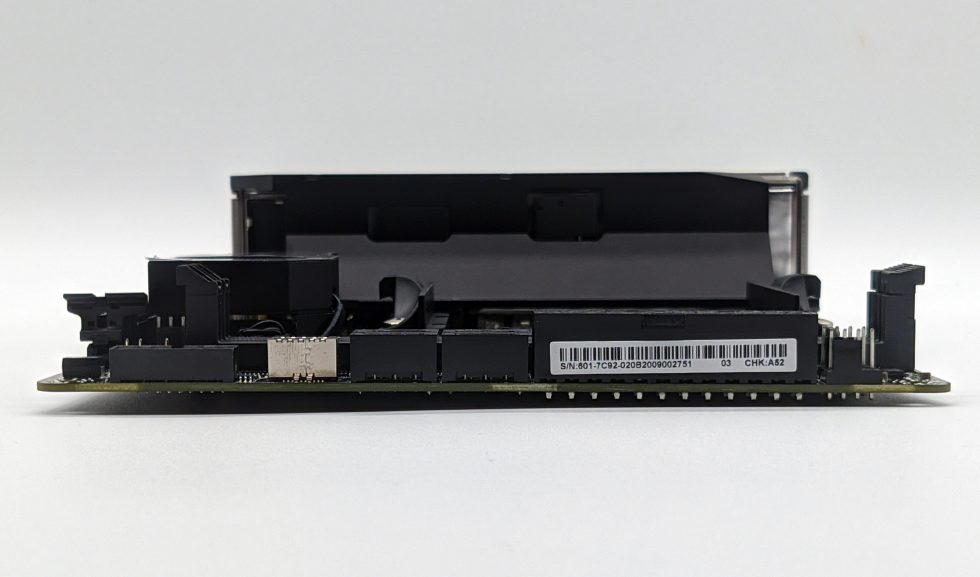
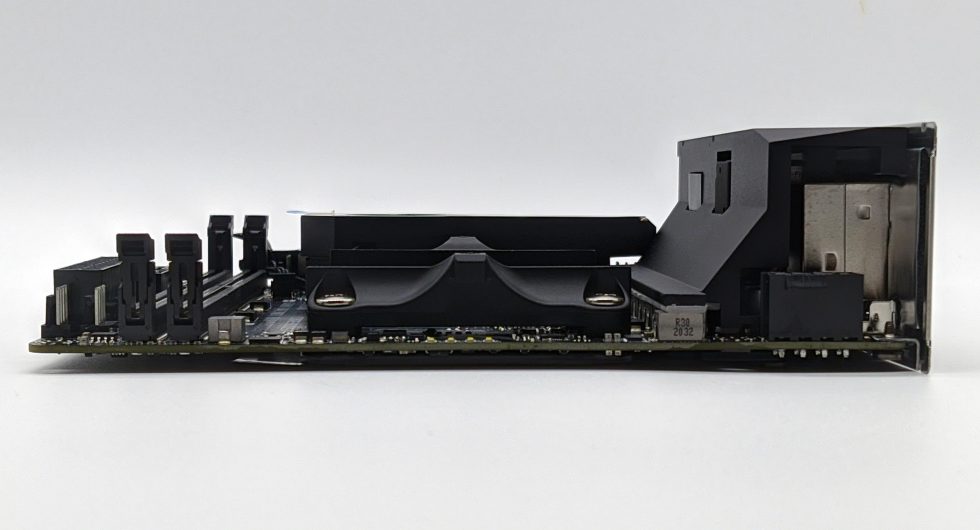
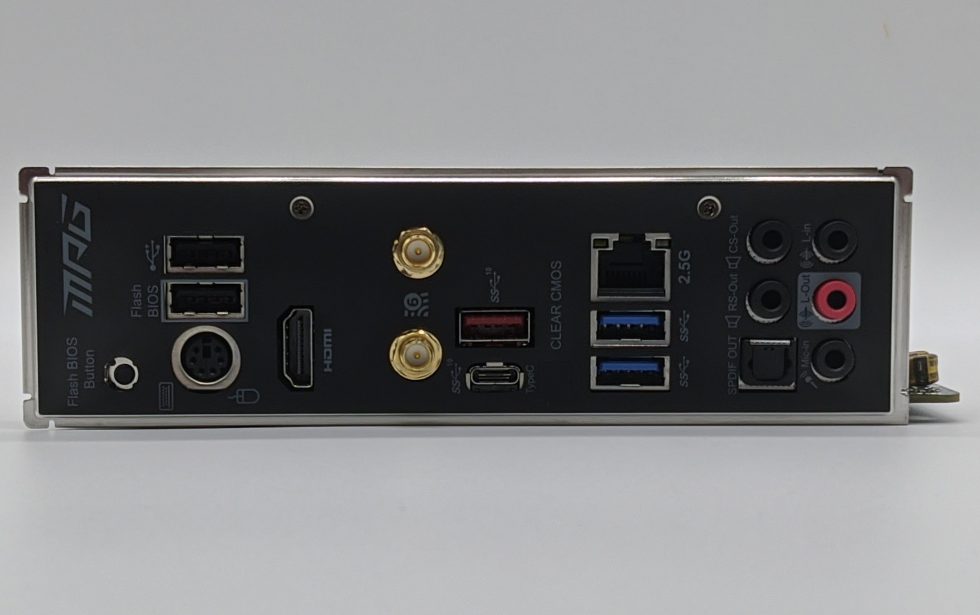


















6 Antworten
Kommentar
Lade neue Kommentare
Moderator
Urgestein
Veteran
Urgestein
Moderator
Alle Kommentare lesen unter igor´sLAB Community →